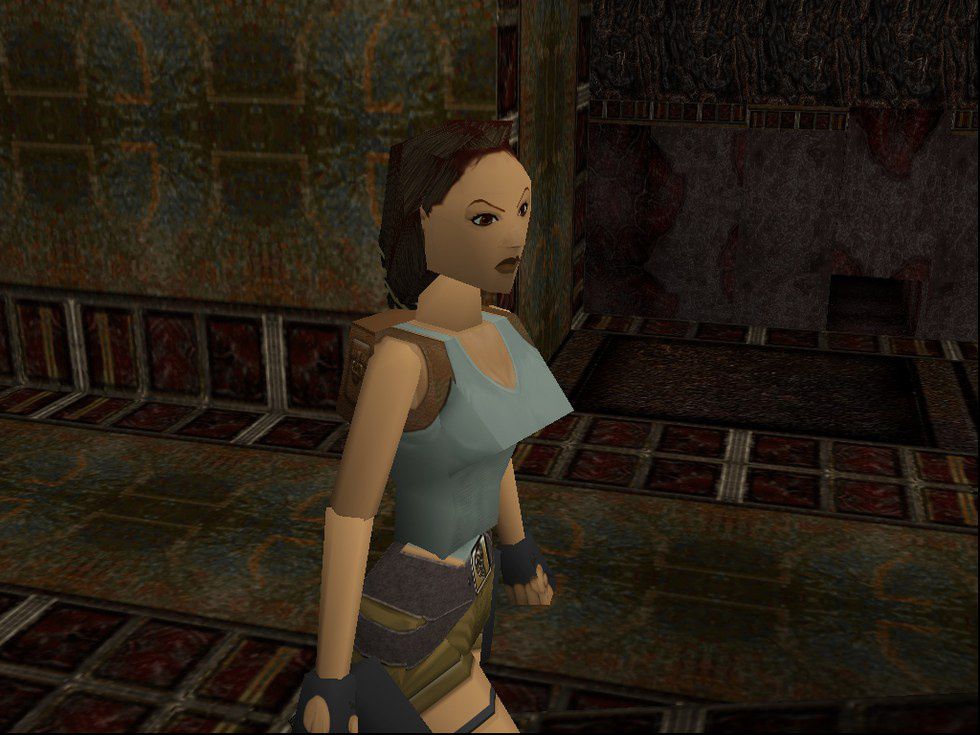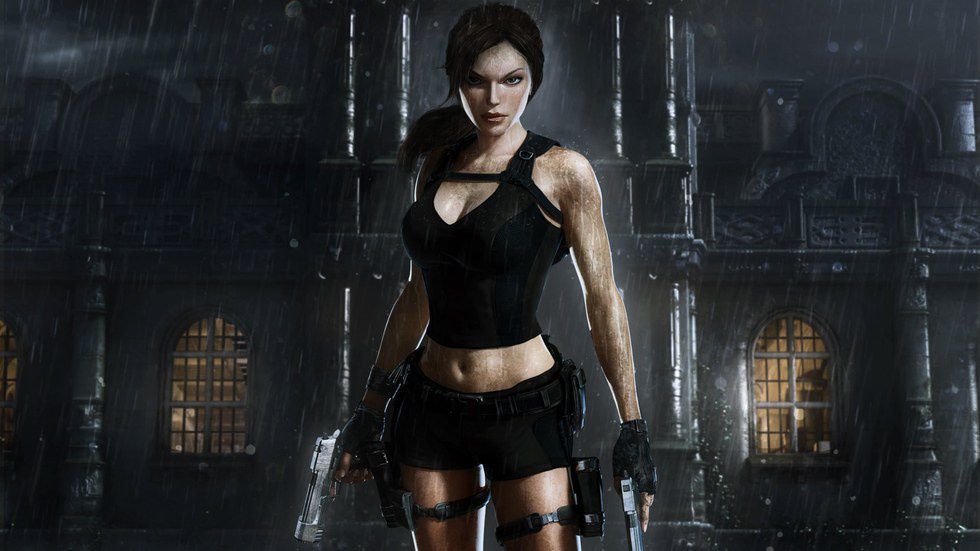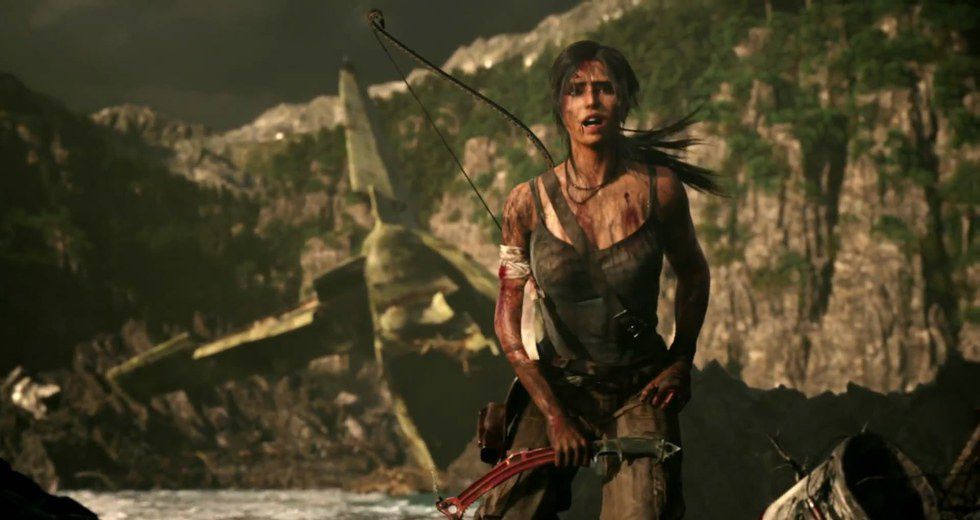In 1996, Eidos interactive (now Square Enix) debuted one of the toughest female protagonists to ever grace the world of video games: Lara Croft. She was sultry, busty, and hardened, with some pretty sharp corners. (Literally.)
Since then, she's made some pretty huge transitions. Originally intended to just be a strong female lead, Toby Gard (the man who created the character) of Core Design (a subsidiary of Eidos) specifically wanted to steer his character away from stereotypical female characters, which he had labeled as "bimbo" and "dominatrix" types. In other words, Gard did not want his character to be sexualized. During development, he went through several different character models, before settling on a tough South American woman named "Laura Cruz." Eidos argued with Gard that the character needed to be more "British-friendly." They flipped through British telephone books to find a British name, and altered her original design and backstory to reflect a British heritage. They settled on the name Lara Croft. While altering the character model, Gard accidentally increased Lara's breast size dimensions by 150 percent, and the rest of the creative team argued to keep this change. After the first Tomb Raider game was completed, Gard left Core Design because of the lack of creative freedom and control he had faced over the ideas he had developed, especially in the case of Lara Croft.
From then on, Lara was the sex symbol we all grew up with. In one particularly eye-opening article by Becky Chambers, we see the damage this character portrayal could do. Becky was given a Playstation and a Tomb Raider game by her grandmother when she was a child. She ate up the game. She was so excited to have a strong female protagonist to play as. She was too young to know much about sexualization. Eventually, she acquired Tomb Raider 2, and one day decided to look on the internet for help with one of the game's puzzles. On one fan site, she was greeted by a picture of Lara, "sprawled naked and winking" at her. At that point, the hero she had come to know changed for her. And the ending scene of the game set it in stone for her. It consisted of Lara appearing like she was about to undress and step into the shower. The camera pans up her bare legs. She then says "Don't you think you've seen enough?" She shoots a gun, and the scene cuts out. After that, Chambers says she knew the game wasn't originally meant for her. As a young pre-pubescent girl, she had looked up to Lara for her strength and poise. When she became old enough to understand what the true purpose of the character was... it changed everything for her.
By the time Tomb Raider: Underworld was released in 2008, Lara had been altered to reflect somewhat more realistic proportions, but was still very much the same sexualized, hot-shorts and crop-top wearing character she had began as.
Honestly, who would do Indiana Jones-esque tomb raiding work wearing spandex shorts and a top that covers nothing but the chest? Nobody: that's who. Definitely not Indiana Jones, or say, Nathan Drake, who is another video game character whose adventures have been compared with Lara's. It was pretty clear that Lara's clothing and overall physical design was meant to attract guys to the game.
Although Lara was a strong, capable, female character, could she really be considered a role model for girls and women, if the heart of her character design was screaming "Girls, you can be strong, tough, and capable too, but men will not be interested unless you show off your body"? The character seemed to be created with only men in mind and communicated that one can't be strong and tough and liked by boys, unless you portray yourself very sexually. The message was subtle, but it was there.
To be honest, I don't think the designers were giving men enough credit. And that was proven when the official reboot of Tomb Raider was released in 2013. This new, completely re-branded Lara Croft, featuring practical clothing and realistic body proportions, sold over a million copies in the first 48 hours after its release. By April 2015, the game's sales had reached 8.5 million, making it the best selling Tomb Raider game to date. Of course many of those sales were to men, proving that men don't need a sexualized female character to enjoy a video game with a woman as the protagonist. They never did.
On top of a brand new, more realistic body and clothing choices, the rebrand featured an entirely new level of insight into Lara's humanity than any of the previous games. She is a 21 year old, naive version of Lara, shipwrecked and stranded on an island during her very first expedition after college graduation, and she is being hunted by crazed cultists. She is forced to kill in order to survive. Her vulnerability and fear is made evident. Even the game controls start out a little clumsy, as she makes her way through the environment, trying to climb, slide, and jump. It is new territory. This is not the smooth, confident Lara of old everyone was familiar with. She is young and frightened. But she is also intelligent. She is keen, resourceful, educated, and able to push through. The game depicts her very first experiences with having to kill, and shows the emotion that the experiences put her through. First, she has to kill a deer because she needs to eat. She apologizes to the deer after shooting it with a bow and arrow, and is shown hesitating to tear it open. Her first human kill is shown as, obviously, an even more traumatizing experience. During a struggle with a man who is trying to kill her, she takes his gun and shoots him before he can shoot her. Covered in blood, and clearly traumatized, she looks at his body, hunches over, and starts sobbing "oh God!" (Warning: While only video game gore, this video is still very graphic, and may be disturbing for some.)
Lara also writes in a number of journals when you stop to camp near fires during the game, and they are long, detailed, and emotional. She is shown as not only a real person, but a real woman, with strong emotions. But she is never portrayed as weak.
Lara has never been more vulnerable than she is in the reboot, but she has also never been stronger, or more realistic. She seems closer now to the intention of her original designer than ever before. The sequel to this reboot, Rise of the Tomb Raider, came out in 2015, and carries the same torch as its predecessor as far as realism goes. I am in the hopes that this rebranding will give girls of all ages a new video game heroine to look up to, and the feeling that they can be strong and capable, and even vulnerable, and respected by men, without having to shed their clothes.
Never played the re-branded Tomb Raider? This trailer will make you want to:
























